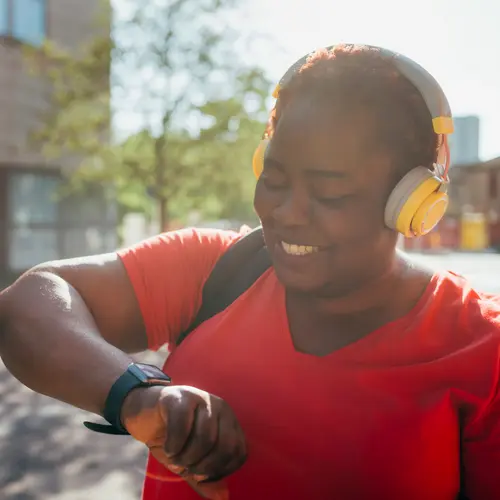Lipohypertrophy is when lumps of fat or scar tissue form under your skin. It is caused by repeat injections or infusions in the same area of the body and is more common in people with diabetes.
Symptoms of Lipohypertrophy
Lipohypertrophy happens more often at sites commonly used for injections including the middle of the thigh and near the belly button. Fat cells in areas with lipohypertrophy are almost twice the size of fat cells in your normal skin, and the lumps can be any size ranging from a golf ball to an orange.
You may have lipohypertrophy if:
- Your skin feels thicker and more rubbery than usual
- You have swollen lumps that stick out from beneath your skin
- These lumps are about one inch wide
- Your skin looks unappealing or strange
You can check for these symptoms by stroking the affected area firmly and see a doctor if you're unsure. It's easy to mistake lipohypertrophy in its early stages as just thickening of the skin, but eventually, you may lose sensation in the affected area.
Causes of Lipohypertrophy
Up to 62% of people with type 1 or 2 diabetes can get lipohypertrophy. This can happen when insulin is injected into the same patch of the skin too many times, leading to the building up of fat and protein.
Lipohypertrophy is twice as common in people taking medium or long-acting insulin as in those taking short-acting insulin. This is because long-acting insulin stays at the injection site longer, allowing fat and protein to build up.
People taking injections for HIV can also develop the condition.
In general, the risk factors for lipohypertrophy include:
- Having type 1 diabetes
- Reusing needles for injections
- Having lots of insulin injections
- Using pen devices for injections
- Having antibodies to insulin
People with a lower BMI — or body mass index — are at higher risk of lipohyperdystrophy.
Lipohypertrophy isn't the same as post-injection inflammation, which is a short-term problem that can be treated with ice packs and over-the-counter medication.
Preventing Lipohypertrophy
Lipohypertrophy can be prevented by switching between different areas of your body for injections. This practice is known as rotating the injection site.
Changing to short-acting insulin is another way of preventing the condition. Fat cells are in contact with this type of insulin for a shorter period of time so cannot build up as much.
Some people accidentally keep injecting the affected area because the scar tissue makes their injections less painful. You can reduce the pain of injecting new sites of your body during rotation by using a smaller needle.
Treatments for Lipohypertrophy
The number of injectable areas on your body is limited, and lipohypertrophy reduces this number even more, so it's important to treat the condition properly.
Treatments for lipohypertrophy include:
- Stopping injecting the affected area until it heals
- Using a new needle for every injection
- Rotating the injection site
- Changing your treatment to short-acting insulin
It often takes a few months for lipohypertrophic skin to heal, but it can sometimes take years. You should stop injecting the area if you have diabetes because insulin absorption from lipohypertrophic skin is unstable and may cause low blood sugar.
You may need to increase your daily dose of insulin to make up for poor insulin absorption due to lipohypertrophy. But, in some cases, rotating the injection site alone is enough to improve insulin absorption.
In over 95% of cases of insulin-related lipohypertrophy, switching to a new kind of insulin and rotating injection sites is an effective treatment regimen.
People with lipohypertrophy have a relatively high chance of high blood glucose. They're also at greater risk of developing DKA — or diabetic ketoacidosis — a condition where the body runs out of insulin and harmful ketones start to build up.
Liposuction for Lipohypertrophy
Liposuction cures lipohypertrophy instantly and permanently. You can get liposuction if you have severe lipohypertrophy and have tried the recommended treatments without success.
Liposuction is a cosmetic procedure that sucks out unwanted fat deposits from your body and involves:
- Injecting the affected area with anesthetic
- Weakening fat cells using a laser, water jet, or vibrations
- Cutting the affected area and inserting a suction tube
- Loosening and removing unwanted fat with the tube
- Draining excess fluid and stitching up the cut

